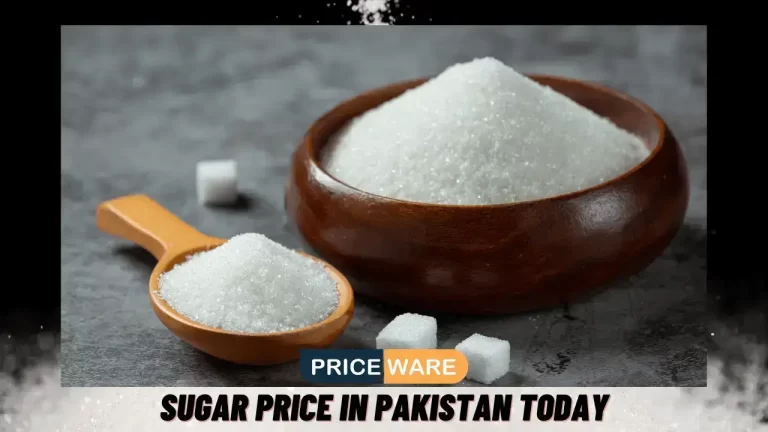Rice Price in Pakistan Today | Rate List 2024
What trends and patterns have been observed in Pakistan’s rice price market and their implications on affordability? This article examines rice price in Pakistan and their role in Pakistani life. We investigate the price of rice for dynamics for consumers, policymakers, and agriculture industry stakeholders in this article.

Understanding the Current Rice Price in Pakistan
Rice Price in Pakistan Over time, Pakistan’s rice prices have seen a dramatic surge, placing great strain on household budgets. At present, one-kilogram bags can range between Rs 350-450; larger quantities such as 25-kilogram bags may cost anywhere between Rs. 5000 to 7800 while 50 kg bags cost between 14999-16800 depending on the variety chosen. It should be noted that price variations depend on which variety is selected.
Rice Price in Pakistan:
| Rice Weight | Minimum Price | Maximum Price |
|---|---|---|
| 1 KG Rice | Rs. 350 | Rs. 450 |
| 25 KG Chawal | Rs. 5000 | Rs. 7800 |
| 50 KG Rice | Rs. 14999 | Rs. 16800 |
Types of 40 KG Rice Price in Pakistan:
| Rice Brand Name | Type of White | Type of Sella | Type of Steam |
|---|---|---|---|
| Super B1 Broken | Rs. 2600 | Rs. 2750 | Rs. 3150 |
| Super Short Grain | Rs. 3200 | Rs. 3400 | Rs. 3600 |
| New Super Basmati | Rs. 4700 | Rs. 5000 | Rs. 5400 |
| 1509 | Rs. 4300 | Rs. 4900 | Rs. 5100 |
| Kainat 1121 Short Grain | Rs. 3200 | Rs. 3400 | Rs. 3600 |
| C 9 | Rs. 2600 | Rs. 2800 | Rs. 3300 |
| Super Basmati Old | Rs. 4900 | Rs. 5300 | Rs. 6000 |
| Kainat 1121 | Rs. 5200 | Rs. 6000 | Rs. 6400 |
| Supri | Rs. 2700 | Rs. 2900 | Rs. 3000 |
| Super B2 Broken | Rs. 2350 | Rs. 2450 | Rs. 2800 |
| Super Fine | Rs. 3000 | Rs. 3580 | Rs. 4000 |
| Kainat 1121 B2 Broken | Rs. 2200 | Rs. 2400 | Rs. 2800 |
| 386 Basmati | Rs. 2850 | Rs. 3300 | Rs. 3600 |
| Irri 6 | Rs. 2350 | Rs. 2600 | Rs. 2800 |
| Kainat 1121 B1 Broken | Rs. 2600 | Rs. 2800 | Rs. 3200 |
| Super Kainat Rice Rate 25 KG | Rs. 4200 | Rs. 4300 | Rs. 4600 |
Read Related Articles:
Qarshi Jam e Shirin Price in Pakistan Today
Influencing Rice Prices in Pakistan: Factors That Affect Prices
Pakistani Chawal prices fluctuate due to various factors that impact them; understanding these components of price change is integral for understanding the dynamics of the rice market and its influence on consumers. Here we explore key influences on rice prices in Pakistan.
Supply and Demand Dynamics:
Rice prices are heavily determined by supply and demand dynamics. Fluctuations in production levels due to weather, pest outbreaks, farming practices, or any number of other factors can have an effect on overall supply. When supply falls short of demand, prices often increase as markets attempt to restore equilibrium; conversely, an excess supply can bring prices down.
Global Market Trends:
The global market plays an essential role in setting rice prices in Pakistan. Local prices are affected by export and import trends, currency exchange rates, and worldwide demand due to population increases or dietary changes.
Cost of Production:
Rice production costs play a large role in its price. Labor wages, fertilizer prices, pesticide rates, and fuel costs all play an integral part. Fluctuations in these input costs have direct implications on the final price; furthermore, the adoption of modern agricultural technology also has an effect.
Market Speculation and Investment:
Market speculation and investment activities create instability in the rice market, with price movements caused by speculators buying or selling contracts which influence market prices; similarly, investments into agricultural commodities – including rice – by financial investors often create price fluctuations as their opinions dictate entry or exit from certain parts of the market.
Understanding these factors and their interactions is crucial for policymakers, traders, and consumers to navigate Pakistan’s rice market effectively. By closely observing them and taking appropriate measures against them, efforts can be made to stabilize and sustainably manage this sector in Pakistan.
Impact on Consumers and Their Budgets
Pakistanis have expressed concern over rising rice prices, which make up an essential portion of household grocery bills. Since it’s a staple food, this trend has forced households to reconsider their budgets to cope with rising costs. Some even cut back consumption or switch to cheaper alternatives, straining already tight budgets and making it harder for some families to meet nutritional needs on time.
Agriculture Policies and Interventions
Recognizing the significance of rice to consumers, Pakistan’s government has initiated measures to stabilize the prices of this essential commodity. Through policies that support local rice farmers while guaranteeing stable supplies of grain to market. Furthermore, efforts are underway to promote sustainable farming practices that increase productivity while simultaneously decreasing production costs; all these initiatives help address challenges faced by rice farmers while helping stabilize the prices of this vital product.
Future Outlook and Predictions
Rice prices have presented consumers with challenges, making it essential to examine their future outlook in this market. Forecasting can be a complicated endeavor due to various factors at play. As supply and demand balance and government actions and regulations take effect, experts expect rice prices to stabilize in the coming months, making the market more predictable and manageable for consumers.
Read Related Articles:
Conclusion: Rice Price in Pakistan
Rising rice prices in Pakistan have put a strain on many households’ budgets, hindering their ability to purchase this essential staple food. Rice price fluctuations have required adjustments in household budgets and led some consumers to look for alternative food sources.
Therefore, government intervention in stabilizing prices and supporting local farmers is key to creating a viable and affordable rice market. By implementing effective policies and interventions, the government can address consumers’ challenges while creating a more stable rice market. Consumers should keep an eye out for fluctuations in price to stay informed and anticipate potential changes that might happen down the road.
Frequently Asked Questions (FAQs)
Rice prices have increased due to factors such as supply and demand dynamics, global market trends, and government policies.
Basmati rice is generally priced higher compared to other varieties due to its unique aroma and long grains.
Some consumers have reduced their rice consumption or explored lower-priced alternatives to manage their grocery budgets.
The government is implementing policies to support local rice farmers and promote sustainable farming practices to stabilize prices.
Experts predict that rice prices may stabilize in the coming months as supply and demand dynamics find a balance, aided by government interventions.






